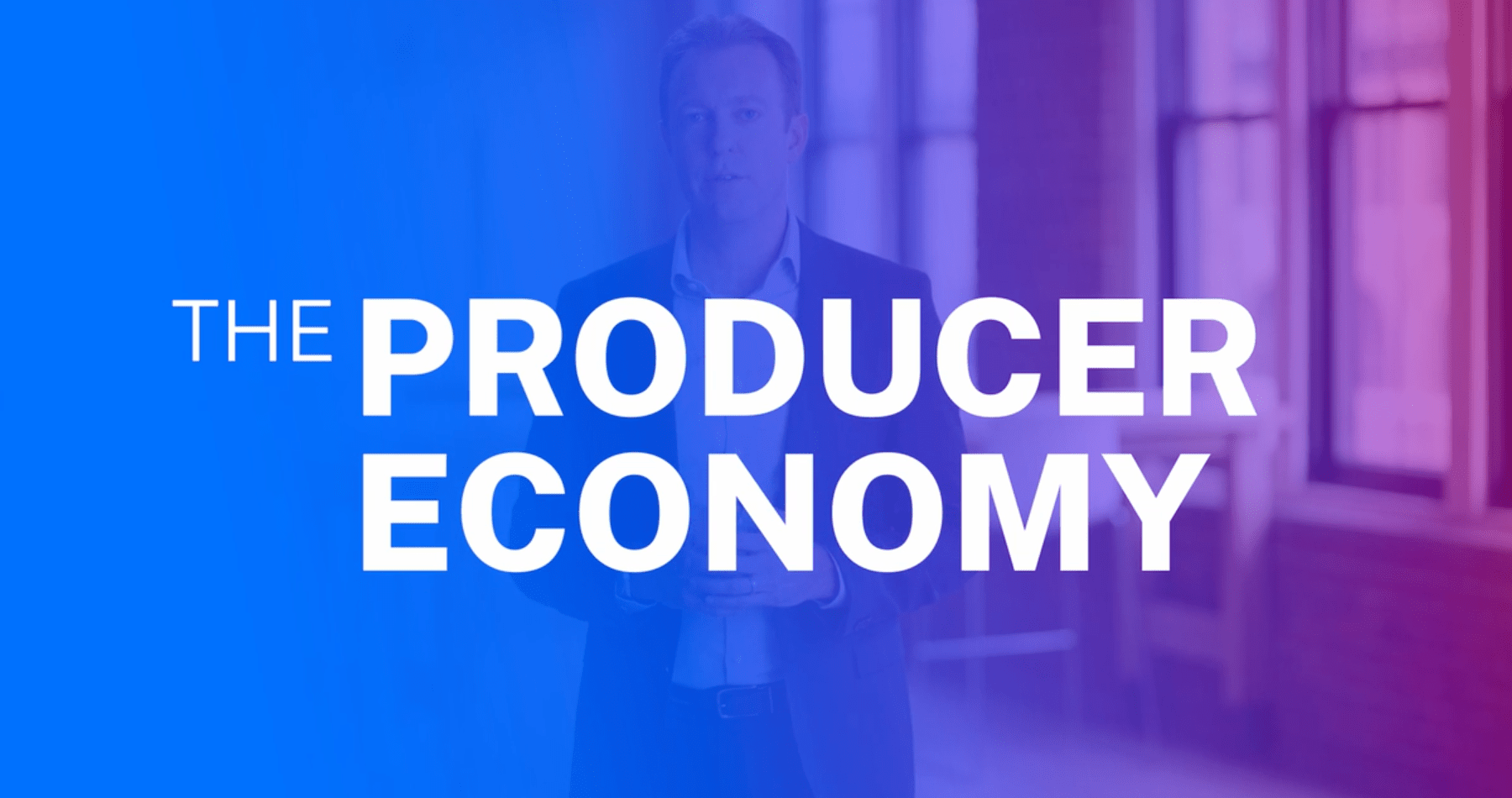The internet and streaming have democratized the landscape of video creation and distribution on a broad scale.
Creators can produce and distribute video to the masses with little or no cost. Major film, TV, news, and sports producers can reach their audiences much more directly. Even brands are beginning to share their stories with their audiences through video.
But something else is emerging and defining itself adjacent to these trends: the producer economy.
THE DEMOCRATIZATION OF VIDEO
The democratization of video has been facilitated by three things.
- Mobile evolution. It put a computer connected to the internet in everyone’s hands.
- Connected TV explosion. It put the internet in our living rooms and has us engaging in a different, mostly passive lean-back capacity.
- Social media revolution. It connected us all and made it a conversation instead of a monologue. Many-to-many, versus one-to-many.
We now have much broader access to all types of content, including content from our friends, from influencers, from creators. All on-demand, all the time, via the internet. As a result, three significant trends have coalesced over the past decade.
- Creator economy. Anyone could express themselves, share it socially, have an algorithm amplify it, and make money on it via automated advertising on YouTube, Instagram, TikTok, and more.
- Streaming wars. As new streaming platforms like Netflix were born, they stepped in between studios and networks and combined those into one. Eventually, every media company followed rather than be disintermediated.
- Brand wave. Brands and companies initially jumped on board the social media train, some with video. Now they’re beginning to build robust, video-first content strategies to tell their stories.
Each of these trends began because democratization allowed them to bypass traditional middlemen and reach consumers more directly.
For example, look at the music business and independent musicians like Macklemore or Doja Cat. They honed their craft, created amazing work, released it directly, got discovered, and built a following—all through YouTube.
YouTube creates massive amounts of value for many artists and creators, but is it truly democratized? Or did the music industry trade a certain type of middleman, a label, for another one that’s based on algorithms and programmatic advertising?
THE TWILIGHT OF THE CREATOR ECONOMY
Creators have had a good run. Millions are out there, and thousands of them are making real money.
With most major social platforms, those revenue-sharing agreements come out to roughly half for the creator. This makes sense for small upstarts building their audience. There are no technology costs, no marketing costs—they can just launch it. And if you hit the social graph and the algorithm just right, the money follows.
But not everyone can be Mr. Beast and build billion-dollar businesses. Further, it’s not clear that those large YouTube audiences can help creators do what Mr. Beast has done and launch other businesses, like his burger chain. It’s more likely that creators will need to diversify.
To insulate themselves from changing algorithms, content guidelines, monetization policies, and other fluctuations, what if creators built multi-channel businesses across multiple platforms on social media? What if they created their own direct-to-consumer channels, from apps to FAST channels?
THE FUTURE OF CREATING IS PRODUCING
Here’s where the producer comes in.
Producers generally supervise a production and are responsible for raising the money and hiring the artists, technicians, staff, and other resources needed to stage it. But we might expand this a little: Producers are now the creators of the creator economy.
They’re the showrunners and creators of major TV shows. They’re the film directors. They’re the CMOs deciding how to represent their brand in videos distributed broadly on social media. And they’re the production team inside your company making videos for internal and external use.
What the internet and streaming have done is create the ability for all of these producers to have a voice and real agency in the distribution of their stories.
So if you’re a producer with meaningful brand awareness and audience following, what’s holding you back? The audience is there. The technology is there too.
Streaming is a robust market, but it can also change quickly. A platform can update an algorithm any time, changing the audience. A funder of content can cancel a show and move on to the next one. (Just ask all those one- or two-season-and-out creators on Netflix). Brands need to tell their stories with video content soon, or they won’t have the customers they have today.
Producers can own their content and their distribution and monetization too. It’s not just for Hollywood anymore. Creators can do it. Companies and brands can do it. All of these producers have the opportunity to reach their audiences on multiple platforms, including directly. This is the producer economy, where producers own their own digital future.




